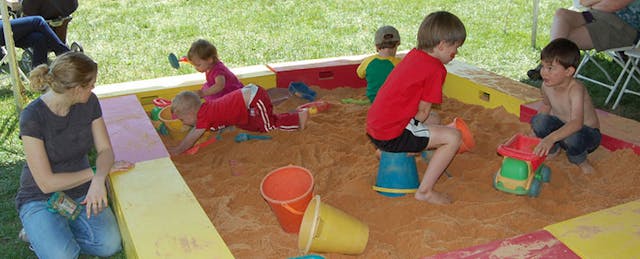How does technology affect the ways kids play, learn, and connect? Such a question popped up continuously over the course of MIT’s Sandbox Summit conference this week. In fact, Claire Green and Wendy Smolen founded Sandbox Summit in 2007 to create a forum for conversations surrounding that very question. But amidst the myriad of conversations, three soundbites rose above the rest as representative of conclusions drawn during the jam-packed event.
“It’s difficult to learn if you’ve never failed.”
These words of wisdom came from VP of Growth & Data at Buzzfeed, Dao Nguyen. And while Nguyen was speaking with regard to how to get stakeholders on board with experimentation, her sentiments were echoed by each one of the fifteen unique presenters from varying contexts.
For example, Dr. Tinsley Gaylean of the Global Literacy Project referenced how his team fails quickly and iterates often when deploying tablets to children in a remote Ethiopian villages in order to effectively provide them with opportunities to gain literacy skills. Such a concept easily applies to students as well. Case in point: high school junior Jack Andraka successfully developed a sensor that detects cancer despite the fact that he was rejected by 199 of the 200 professors he reached out to when searching for lab space for his experiments.
The overwhelming sentiment from the presenters, which was reinforced by the steady stream of retweeted quotes on Twitter, demonstrated the clear consensus that viewing failure as an opportunity for learning and growth is essential for success.
“Let go and the kids will figure it out.”
For those individuals familiar with the World Peace Game, it might not surprise them to hear that such a quote was spoken by John Hunter, creator of the unique hands-on political simulation. Entrepreneur and teacher John Hunter revealed that he is usually terrified that global chaos will prevail as each new cohort of fourth graders plays the game in his classroom. However, in over forty years, not a single class has failed to achieve global prosperity.
Photo by Charlotte Fixler
Hunter expressed that creating opportunities for epiphanies and discoveries leads to some of the most imaginative and innovative student thinking he has ever witnessed. The elementary school teacher's emphasis on exploratory learning experiences was supported by researcher, conference co-chair, and MIT Education Arcade Creative Director Scot Osterweil’s talk on age-appropriate apps. Osterweil underscored the idea that media creators, educators, and parents should focus on providing young children with open-ended play experiences where they can master the tools of their culture, rather than those that will accelerate schooling.
“Kids today must be heard and listened to.”
What is one of the essential ingredients for a successful media project targeted at today’s kids? According to Jeff Gomez, CEO of Starlight Runner Entertainment, and other Sandbox speakers, that success revolves around looking to the kids themselves for ideas and guidance.
In fact, Katie Bessiere, Senior Director of Digital Consumer Insights and User Experience Research at Nickelodeon, and Allison Druin, Chief Futurist of the University of Maryland’s Research Division, have made interacting and brainstorming with kids an integral part of their co-design creative process. Their “Kidsteam” process creates a thought community of researchers, producers, and most importantly, kids, and often leads to surprising results (like an Emmy award!)
Dr. Mitchel Resnick, one of the minds behind kid-friendly programming language Scratch, channels the passion (and sometimes pointed critiques) from young Scratch users into his work. Taking comments from direct interaction with the target audience results in a fun and innovative development process--and a more authentic end product.
The synergies between technology, play, and learning for kids became apparent as the cross-cutting themes of failure, exploration, and child-driven development came into focus. But the conversation shouldn’t stop there. Curious to learn more or share? Check out the collection of tweets from the event and add your own thoughts about that childlike sense of play and experimentation.


